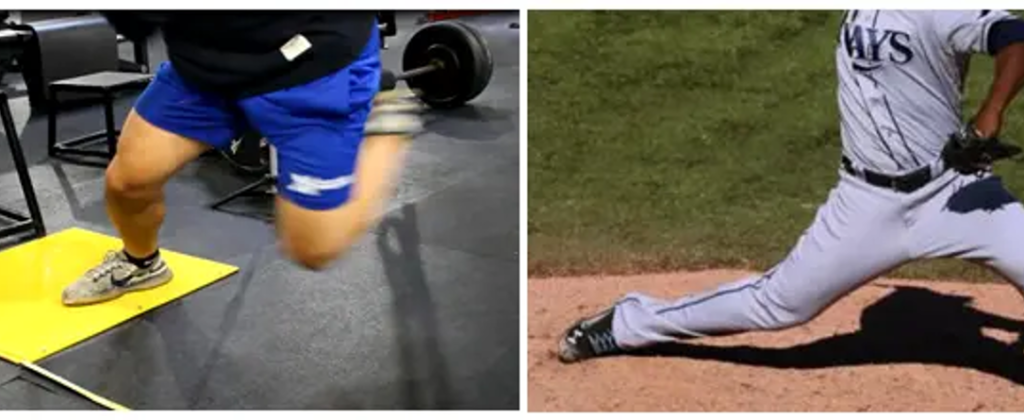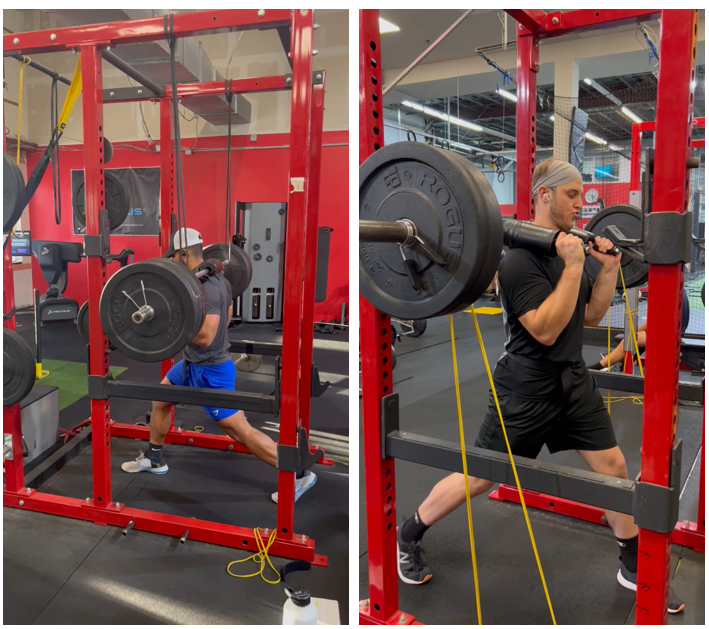
The formula for power is Force × Velocity. When it comes to producing power, athletes can approach it in two different ways, by relying more on the force side or the velocity side of that equation.
Athletes who are more force-based can move greater mass but not necessarily as fast as their velocity-based counterparts. Think of a powerlifter… they move a lot of weight, but at a slow rate of speed.
Velocity-based athletes, on the other hand, tend to move a lighter load at a much faster rate by better utilizing what’s called the stretch-shortening cycle (SSC), essentially, how efficiently they can transition from an eccentric movement to a concentric movement (elasticity).
After an assessment, we can determine whether an athlete’s power curve favors the force side or the velocity side of the equation and program accordingly. For example, a force-based athlete should focus more on improving elasticity during training sessions. The same applies in reverse, if the power curve favors elasticity (velocity), the athlete needs to work more on developing maximal strength (force) to balance the equation.
Test using a Squat or CMJ Jump can give us more insight as to how well an athlete uses their stretch Shortening Cycle.
Velocity-based training is a tool used to measure bar speed, helping determine the correct load and better identify which side of the power curve an athlete needs to target. Performing a rep between 0.35–0.75 m/sec correlates more with the force side of power (absolute strength and acceleration strength), while 0.75–1.2 m/sec correlates more with the velocity side of power (strength speed and speed strength). For most athletes, peak power output occurs between 0.75–0.90 m/sec and can be identified by monitoring their exercise sets.
In the baseball off-season, after an initial four weeks of tissue preparation (early off-season), the next phase depends on the type of athlete. For some, maximum strength training is introduced, followed by a power phase (late off-season). Others, if determined to be “strong enough,” can begin directly with the power phase.
In these two scenarios, the force-based athlete should focus more on plyometric exercises to improve elasticity, while the velocity-based athlete should work on becoming more rigid through heavier eccentric and/or isometric loads and exercises.
During a strength phase, accommodating resistance with chains can help achieve higher peak power by promoting a more explosive movement out of the bottom of the rep, creating greater acceleration and force output.
In a power phase, resistance bands can be used to either resist or assist movement out of the bottom position of the lift. Band-assisted exercises are ideal for force-based athletes, helping them generate force more quickly from the bottom position. Band-resisted exercises are generally used for velocity-based athletes, encouraging them to control the weight eccentrically and continuously produce force throughout the entire concentric portion of the lift.

Using band assisted exercises for force-based athletes and band resisted for more velocity-driven athletes during a power phase.
These training methods are implemented over a 12–16-week off-season, divided evenly across training phases to progressively develop a solid muscular foundation, strength, and power. This structured approach prepares the athlete for the physical demands of the upcoming baseball season.
Ryan Gallagher is a Strength and Conditioning major from Montclair State University and is here for the Fall internship.
